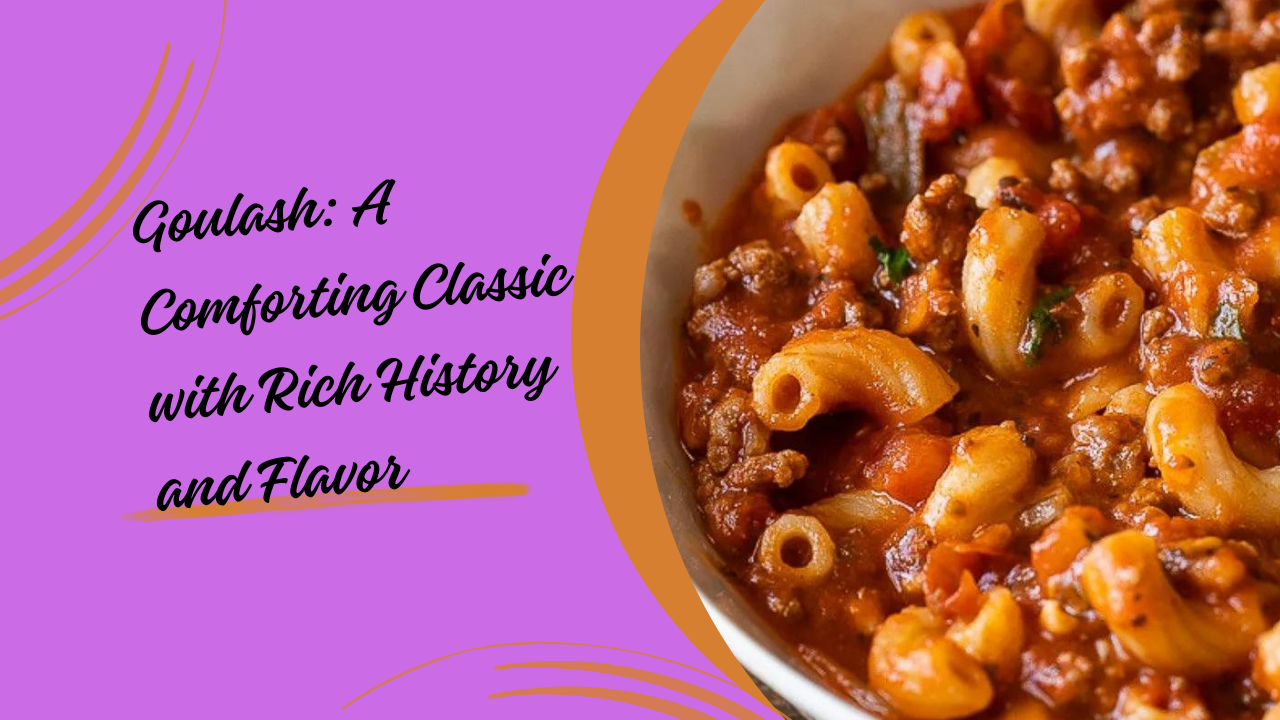Goulash is more than just a dish; it’s a culinary symbol of Hungary, steeped in history and cherished across various cultures. This hearty stew has warmed the hearts and homes of many, with its rich, savory flavors and satisfying simplicity. But what exactly is goulash, and how did it become such a beloved dish worldwide?
Origins of Goulash
Goulash, known as “gulyás” in Hungarian, traces its roots back to the 9th century, to the Magyar shepherds who roamed the plains of Central Europe. These herdsmen needed a meal that was easy to prepare, nutritious, and could be preserved for long journeys. They developed a method of cooking and drying meat with onions and other simple ingredients, creating a portable meal that could be rehydrated over a fire.
The word “gulyás” actually means “herdsman,” highlighting the dish’s humble origins. Over time, as Hungary’s borders expanded and contracted through wars and political changes, goulash evolved, incorporating new ingredients and techniques, but it always retained its status as a symbol of Hungarian culture.
Ingredients and Preparation
Traditional Hungarian goulash is a soup or stew made with beef, onions, Hungarian paprika, tomatoes, and green peppers, all slowly simmered to develop deep, robust flavors. Paprika, a spice made from ground peppers, is essential to the dish and gives goulash its characteristic red color and warm, earthy flavor. There are several variations of goulash across Central and Eastern Europe, with each region adding its own twist to the recipe.
Key Ingredients:
- Beef: Traditionally, tougher cuts of beef like chuck or shank are used, which become tender and flavorful after long, slow cooking.
- Onions: A large amount of onions is used, almost in equal proportion to the meat, providing a sweet and savory base.
- Paprika: Hungarian sweet paprika is the star of the dish, providing both flavor and color.
- Caraway Seeds: These add a subtle, slightly anise-like flavor that complements the paprika.
- Garlic and Bay Leaves: These enhance the depth of flavor.
- Tomatoes and Peppers: These vegetables add acidity and sweetness, balancing the richness of the meat.
- The preparation of goulash is straightforward but requires patience. Onions are sautéed until golden, then beef is added and browned. Paprika is introduced early in the process to allow its flavors to meld with the meat. The stew is then simmered for several hours, allowing the meat to become tender and the flavors to deepen.
Variations of Goulash
While Hungarian goulash is the most well-known, several variations exist across Europe, each reflecting local tastes and ingredients.
- Austrian Goulash: This version is thicker, often made with less broth and sometimes includes potatoes or dumplings.
- Czech Goulash: Known as “guláš,” this version is similar to the Hungarian style but often served with bread dumplings.
- German Goulash: In Germany, goulash is often made with a combination of beef and pork and is served with egg noodles or potatoes.
- American Goulash: This variation is quite different from its European counterparts, resembling more of a pasta dish with ground beef, tomatoes, and elbow macaroni. It’s a quick and comforting meal that many in the U.S. grew up eating.
Goulash in Modern Cuisine
Today, goulash is enjoyed worldwide, and it has been adapted to suit various tastes and dietary preferences. While traditional recipes remain popular, chefs and home cooks alike experiment with new ingredients and methods, such as using different meats or incorporating modern cooking techniques like slow cookers or instant pots.
Goulash continues to be a beloved dish because of its versatility, simplicity, and the comfort it provides. Whether served as a rustic stew on a cold winter night or a modern twist at a gourmet restaurant, goulash remains a testament to the enduring appeal of hearty, flavorful food.
Conclusion
Goulash is more than just a meal; it’s a culinary tradition that carries with it the history and culture of Central Europe. Its rich flavors, straightforward preparation, and adaptability have made it a favorite across the globe. Whether you’re enjoying a traditional Hungarian gulyás or a modern take on this classic dish, you’re partaking in a centuries-old tradition that continues to warm hearts and homes everywhere.
Read Also:- Mediterranean Diet Lunches with No Added Sugar
